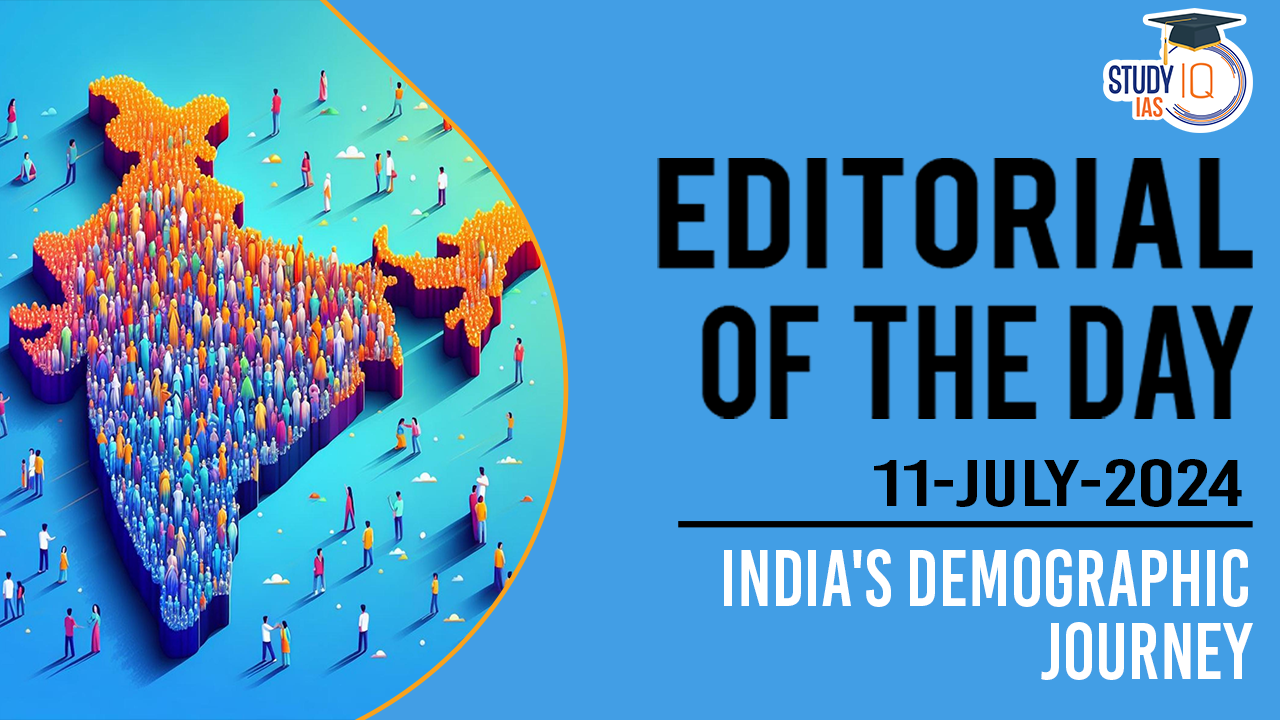Table of Contents
Context: India’s demographic evolution impacts its progress towards Sustainable Development Goals (SDGs).
Sustainable Development Goals (SDGs)
- In 2015, the UN adopted the SDGs to assess the progress of nations, with 2030 as the target year.
- India’s progress in SDGs must be viewed in light of its population dynamics.
- Core SDGs: “No Poverty, Zero Hunger, Good Health.”
- These three SDGs form the core of ‘development,’ ensuring food, shelter, and health for all.
- Core SDGs: “No Poverty, Zero Hunger, Good Health.”
India’s Population Dynamics
Key Components:
- Fertility: According to the National Family Health Survey (NFHS)-5, India’s Total Fertility Rate (TFR) decreased from 3.4 to 2 between 1992 and 2021.
- The TFR is now below the replacement level of 2.1.
- Mortality: There has been a significant drop in mortality rates.
- Average life expectancy has increased over time.
- India is experiencing a demographic shift towards an ageing population. In 2011, 8.6% of the population was aged 60 years and above, projected to rise to 19.5% by 2050.
Implications
- Demographic Dividend: Reduction in fertility indicates a shift towards smaller family norms, potentially reducing the dependent population and creating a demographic dividend.
- India can harness its young workforce by creating employment opportunities.
- Health Improvements: Declines in mortality and increases in life expectancy reflect a robust healthcare system and improved living standards.
- Ageing Population: The ageing population necessitates long-term plans for geriatric care and social security benefits.
- Migration and Urbanisation: Rapid rural-to-urban migration threatens existing urban infrastructure.
- Gender Equality: Gender equality is crucial for achieving SDGs. Women’s labour force participation, political representation, and societal plight must be addressed.
India’s SDG Journey
Achievements
- Poverty: The proportion of the population below the poverty line reduced from 48% to 10% between 1990 and 2019.
- MGNREGA (2006) addressed rural poverty, while Janani Suraksha Yojana (2005) improved maternal health and reduced healthcare costs for poor families.
- Hunger: The Green Revolution made India self-sufficient in crop production.
- The proportion of the population suffering from hunger reduced from 18.3% in 2001 to 16.6% in 2021.
- Despite POSHAN Abhiyaan (2018), India still faces significant malnutrition challenges.
- Health: Maternal Mortality Rate (MMR) decreased from 384.4 in 2000 to 102.7 in 2020.
- Under-five and infant mortality rates saw significant reductions post-2000.
- India needs to further improve to reach health targets.
Ongoing Issues
- Income Inequality: The top 10% of India’s population holds 77% of national wealth. The top 1% holds 40% of total wealth.
- Equitable distribution of development benefits is crucial for true sustainable development.
- Nutrition: India ranked 111 out of 125 countries in the Global Hunger Index (2023).
- Stunting, wasting, underweight children, and anaemia among women remain serious issues.
- Healthcare: India faces a double burden of communicable and non-communicable diseases (NCDs), necessitating stronger safety nets to prevent families from falling into poverty due to health expenses.
Way Forward
- Acknowledge changing population dynamics while forming policies.
- Address income inequality and harness the demographic dividend through job creation.
- Strengthen health and nutrition programmes with increased budgetary allocation.
- Empower women and adopt a gender-equal approach to address development issues.
- Multi-sectoral collaboration and political will are essential to meet SDG targets by 2030.


 Utkal Divas 2025: Odisha Foundation Day ...
Utkal Divas 2025: Odisha Foundation Day ...
 List of Military Exercises of India 2024...
List of Military Exercises of India 2024...
 GPS Spoofing and Its Impact in India: A ...
GPS Spoofing and Its Impact in India: A ...





















